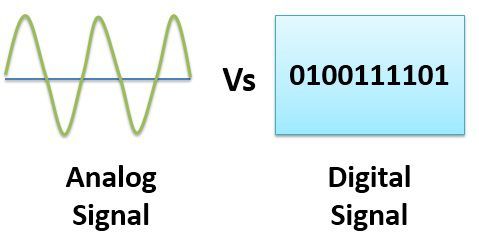Analog and Digital (3/25-3/29)
 |
| Difference between Analog and Digital Signal by Tech Differences |
Summary:
Analog devices are representations of something else. For example, an analog camera takes a picture of something, but the picture is not the real thing, it is simply a representation. Most analog signals have infinite possibilities, just as how there is an infinite number of colors in our world. This compares to digital signals, which have a set amount of values, and are not infinite. Digital displays automatically show readings on LCD displays, rather than by using pointers and dials. They are much quicker and easier to use than analog and store more information in less space.
We see the combination of both analog and digital in our daily lives. Sampling is when you convert an analog signal to digital. Sampling means splitting in regular interval to convert it in digital form. This is an analog-to-digital conversion. When you convert an analog signal to digital, the analog signal is more accurate because digital signals have a specific amount of data. By using different amounts of sampling rates, we can sample the signal. When converting analog data to digital, the digital signal is much less accurate and does not contain all of the necessary information.
SP4: Analyzing and Interpreting Data
This week, we analyzed and interpreted data from graphs to show analog-to-digital conversion. The purpose of this activity was to understand how accurate the conversion can be and to see which signal was more accurate. We used tables, graphs, and spreadsheets to display and analyze the data we were learning about. We used an analog graph and inputted data into a table to create a digital graph. After doing this, we could compare and interpret our graphs to understand sampling. By learning how to analyze and interpret data, I understand more about sampling and accuracy with analog-to-digital conversions.
XCC: Cause and Effect
In class, I observed a cause and effect relationship between analog and digital signals, and the conversion that takes place when sampling. The differences between analog and digital information cause the conversion to be less accurate and not an accurate representation of the original signal. Since analog data can be infinite, conversions are not 100% accurate. The digital signal can not contain an infinite amount of data. Learning and observing this relationship has helped me learn more about the differences between analog and digital signals, and how sampling takes place.
Comments
Post a Comment